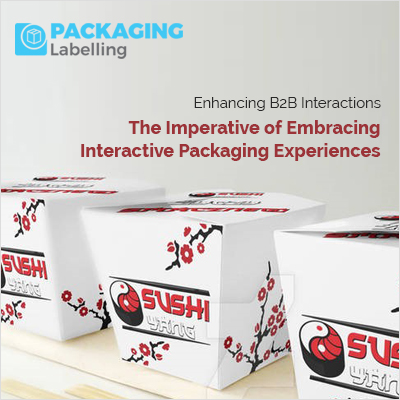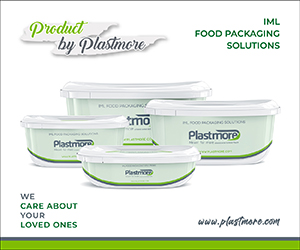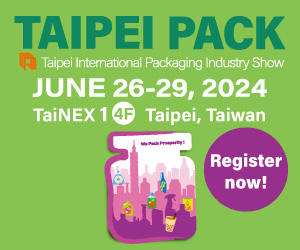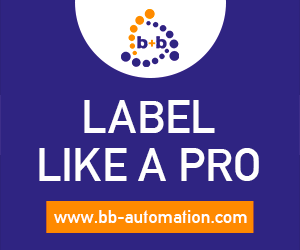Enhancing B2B Interactions: The Imperative of Embracing Interactive Packaging Experiences

Introduction:
Within the ever-evolving realm of business-to-business (B2B) transactions, enterprises are consistently on the lookout for creative methods to captivate their clients and set themselves apart from rivals. A notable trend gaining momentum is the incorporation of interactive packaging experiences into B2B marketing approaches. This article delves into the compelling motives behind B2B companies embracing interactive packaging experiences and the substantial influence they can wield on customer relations, brand image, and overall business prosperity.
I. Unleashing Creativity in Packaging:
Traditionally, B2B packaging has been viewed as a functional necessity rather than an opportunity for creativity. However, interactive packaging experiences allow companies to break free from the conventional mold and infuse creativity into their product presentations. Whether through augmented reality (AR) elements, QR codes, or NFC technology, businesses can turn their packaging into an interactive canvas that engages and captivates clients.
II. Elevating Brand Perception:
Interactive packaging experiences provide a unique avenue for B2B companies to elevate their brand perception. By incorporating technologies that deliver immersive and memorable interactions, businesses can position themselves as forward-thinking and customer-centric. These experiences create a lasting impression, fostering a positive perception of the brand and enhancing its overall image in the eyes of clients.
III. Enhancing Product Information and Education:
B2B transactions often involve complex products and services. Interactive packaging offers an effective solution to communicate intricate details and specifications in a user-friendly manner. With the integration of QR codes or RFID tags, clients can access augmented product information, video demonstrations, or interactive guides, facilitating better understanding and informed decision-making.
IV. Strengthening Customer Engagement:
Interactive packaging experiences provide a direct channel for B2B companies to engage with their clients on a deeper level. By offering interactive elements, such as games, surveys, or exclusive content, businesses can create a two-way communication platform that goes beyond the transactional nature of traditional B2B relationships. This enhanced engagement fosters a sense of connection and loyalty, contributing to long-term customer satisfaction.
V. Differentiating in a Competitive Market:
In a crowded B2B market, setting oneself apart is crucial. Interactive packaging experiences emerge as a potent means of differentiation, positioning businesses distinctively amidst competitors. Through the adoption of cutting-edge technologies, companies demonstrate their dedication to remaining at the forefront and providing value that extends beyond the fundamental product or service. This distinctive approach can play a pivotal role in acquiring clients and establishing enduring partnerships.
VI. Collecting Valuable Data:
Interactive packaging experiences provide a valuable avenue for B2B companies to collect data on customer behavior and preferences. By tracking interactions with QR codes, AR experiences, or other interactive elements, businesses can gain insights into client interests, and engagement patterns, and even gather feedback. This data becomes instrumental in refining marketing strategies, tailoring offerings, and optimizing the overall customer experience.
VII. Aligning with Sustainable Practices:
The global business landscape is increasingly focused on sustainability, and B2B companies are no exception. Interactive packaging experiences can be aligned with sustainable practices by minimizing physical marketing collateral, reducing waste, and promoting eco-friendly initiatives. Embracing environmentally conscious packaging not only appeals to socially responsible clients but also aligns with global sustainability goals.
VIII. Adapting to Evolving Consumer Expectations:
As B2B buyers become more accustomed to seamless and interactive experiences in their personal lives, their expectations for similar interactions in a professional context are on the rise. B2B companies that proactively embrace interactive packaging experiences are better positioned to meet and exceed these evolving expectations, demonstrating agility and adaptability in the face of changing market dynamics.
IX. Creating Memorable Unboxing Experiences:
Unboxing a product is often a memorable moment for customers, and interactive packaging experiences take this to a whole new level. By incorporating elements like AR-enabled instructions or personalized messages triggered by QR codes, B2B companies can enhance the unboxing experience, leaving a lasting positive impression. These memorable moments contribute to increased brand recall and customer satisfaction, fostering a sense of delight in the B2B purchasing process.
X. Facilitating Direct Sales and Reorders:
Interactive packaging can serve as a direct sales channel for B2B companies. By integrating features like quick reorder buttons, clients can conveniently place repeat orders directly through interactive elements on the packaging. This not only streamlines the purchasing process but also encourages customer loyalty by providing a hassle-free and efficient means of replenishing supplies or restocking inventory.
XI. Amplifying Social Media Presence:
Interactive packaging experiences provide ample opportunities for B2B companies to amplify their social media presence. Encouraging clients to share their interactive experiences on platforms like Instagram, LinkedIn, or Twitter can generate organic publicity and showcase the brand's commitment to innovation. User-generated content from these interactive experiences becomes a powerful tool for word-of-mouth marketing, reaching a broader audience and potentially attracting new business opportunities.
XII. Adapting to Remote Business Environments:
In the age of remote work and virtual collaboration, the significance of interactive packaging experiences is heightened. B2B companies can utilize these advancements to overcome the geographical divide between clients and their offerings. Whether through virtual product demonstrations, packaging-triggered remote training sessions, or augmented reality-enhanced presentations, enterprises can guarantee a smooth and captivating experience for clients, irrespective of their location.
XIII. Demonstrating Tech-Savviness and Innovation:
In the rapidly evolving business landscape, being perceived as technologically advanced and innovative is a strategic advantage. Embracing interactive packaging experiences allows B2B companies to showcase their tech-savvy approach, aligning their brand with modernity and staying in tune with the digital age. This perception can significantly contribute to building trust with clients who value partners that embrace and leverage cutting-edge technologies.
XIV. Future-Proofing B2B Relationships:
Incorporating interactive packaging experiences isn't merely a passing trend; it represents a strategic initiative to future-proof B2B relationships. With ongoing technological advancements, businesses that have integrated interactive packaging will be better equipped to navigate emerging trends and maintain a leading edge. This forward-looking strategy establishes B2B companies as dependable and flexible partners, guaranteeing sustained success in the constantly evolving business terrain.
Conclusion:
In a landscape where customer expectations are in flux, and technology is progressing rapidly, the imperative for B2B companies lies in harnessing the potential of interactive packaging experiences. Beyond the immediate advantages of heightened engagement and distinctive positioning, these innovations foster a comprehensive and future-ready strategy for B2B relationships. Through the adoption of interactive packaging, businesses not only meet present demands but also establish themselves as pioneers in innovation, laying the groundwork for enduring success in the dynamic B2B marketplace.










